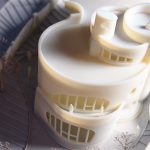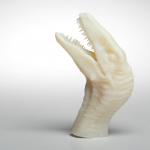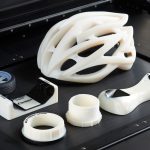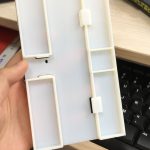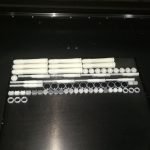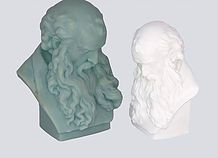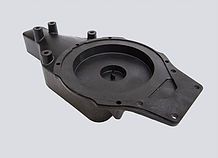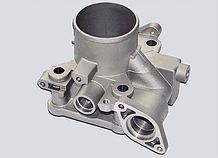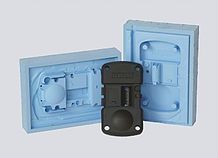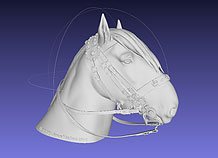Manufacturing Infomation
 Pricing: $1.19/cm3
Pricing: $1.19/cm3
 Minimum Cost:$25
Minimum Cost:$25
 Lead Time: 2 days
Lead Time: 2 days
342 x 342 x 200
2 x 2 x 2
0.032
±0.1 mm
Suitable for:
Not Suitable for:
Colours Available
Colours Post Process
Additional Info
Verowhite resin is an acrylic-based photopolymer that comes in white, grey and black. We recommend using this material for smaller, detailed products that don't face high stress or heat. The level of detail for these products is high, but individual layers are more visible than in Strong & Flexible plastics
Ensure your model can be cleaned
Hard to clean models will be rejected, here's why. During printing, the cavities in your model will be supported by a waxy material which must then be removed before we ship it. While a good deal of this material comes off without any issues, the rest must be scraped away manually with a scalpel. If you design a model with cavities that make such scraping difficult, then unfortunately we cannot produce this model.
A good rule of thumb is that if it can't be cleaned with a scalpel the size of a ball point pen, it will most likely be rejected and require a redesign.
Features
 Watertight
Watertight

 Foodsafe
Foodsafe

 Glue-able
Glue-able

 Recycleable
Recycleable

 Biocompatible
Biocompatible

 Biodegradable
Biodegradable

 Additive Manufacturing
Additive Manufacturing

Design Rules





The minimum detail is determined by the printer's resolution.When detail dimensions are below the minimum, the printer may not be able to accurately replicate them. Details that are too small can also be smoothed over in the polishing process.
To ensure details come out clearly, make them larger than the indicated minimum. We may refrain from printing products with details smaller than the minimum, since the final product will not be true to your design. If your product has details smaller than the minimum, try making them larger, removing them, or considering a material with finer detail.





